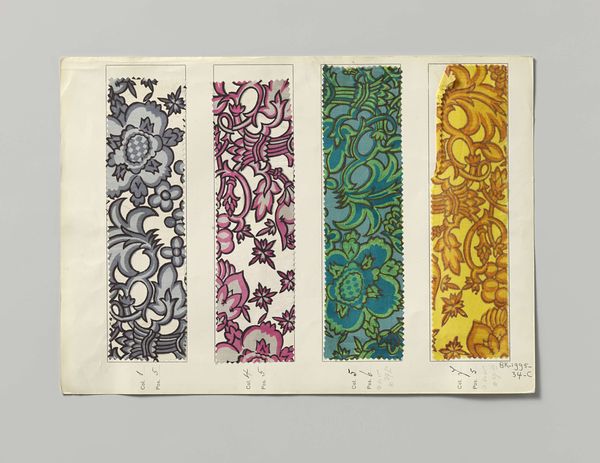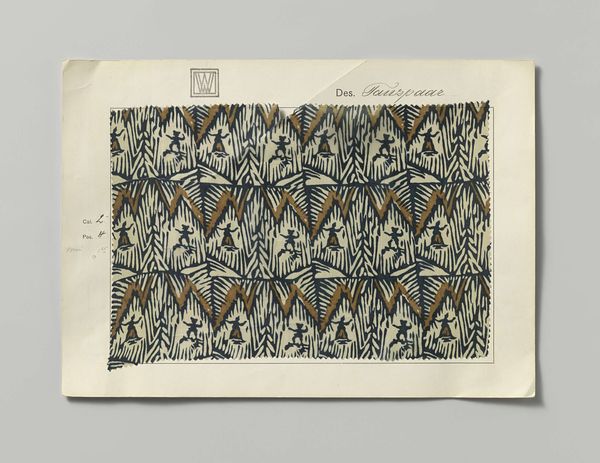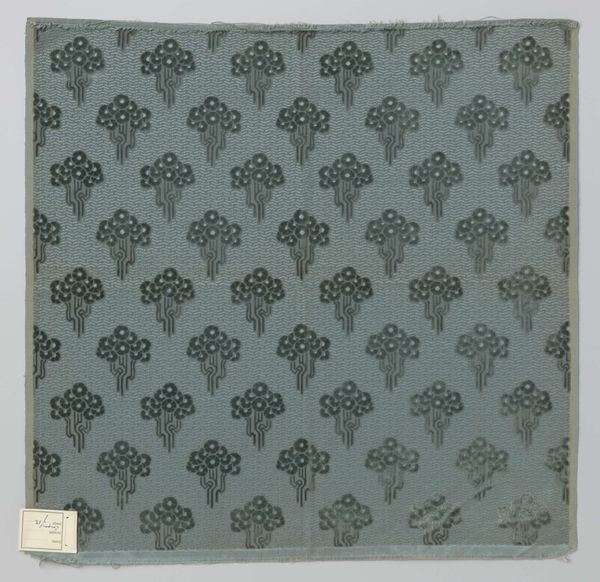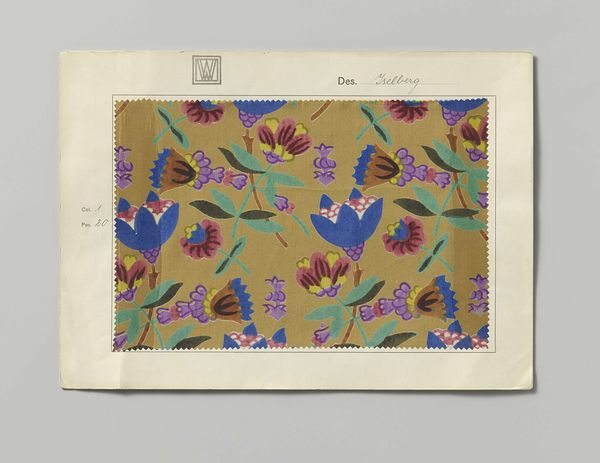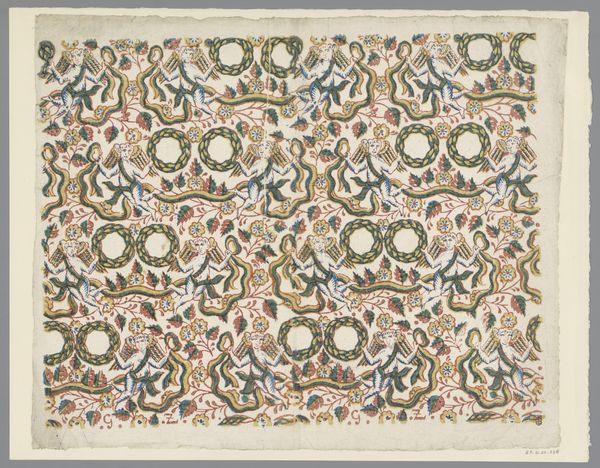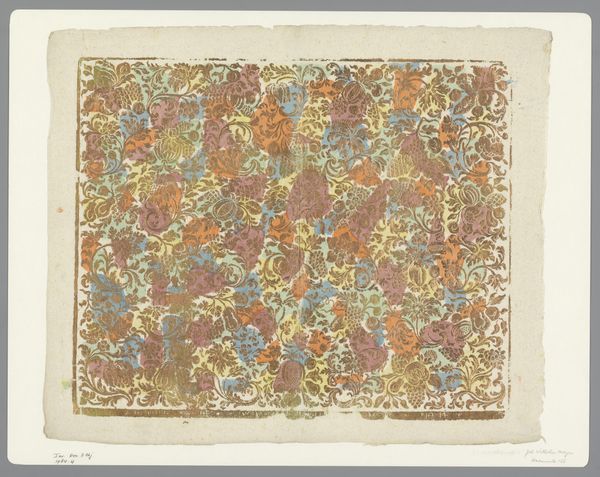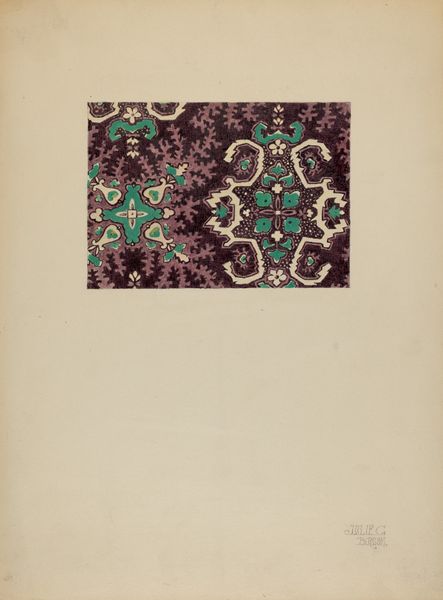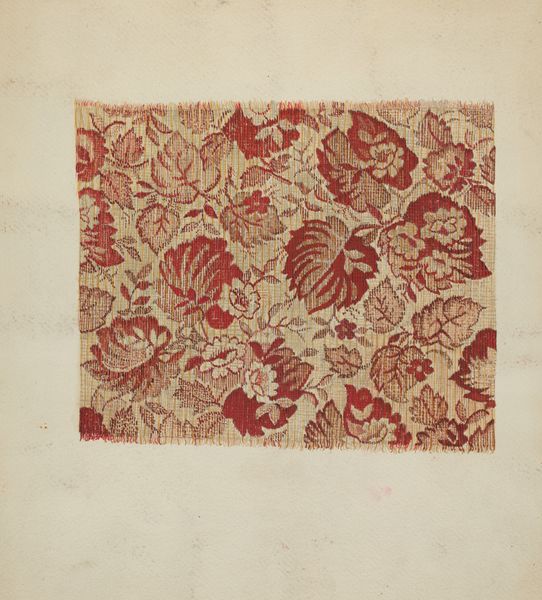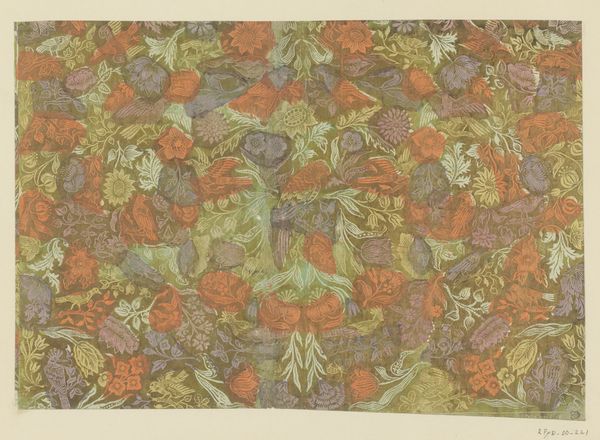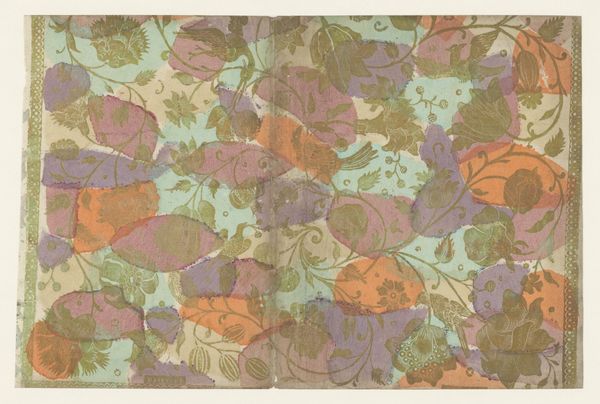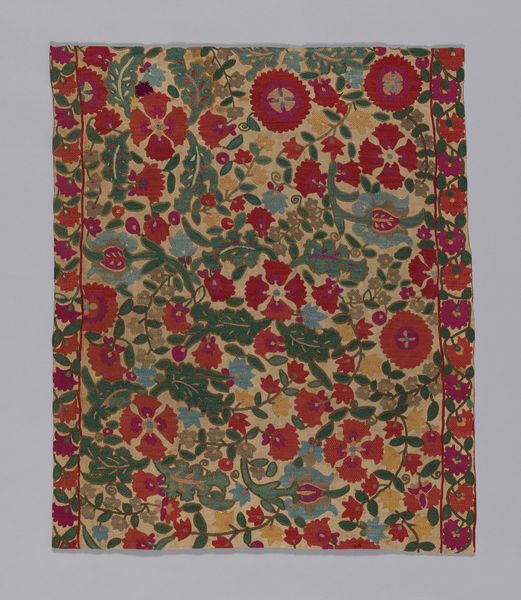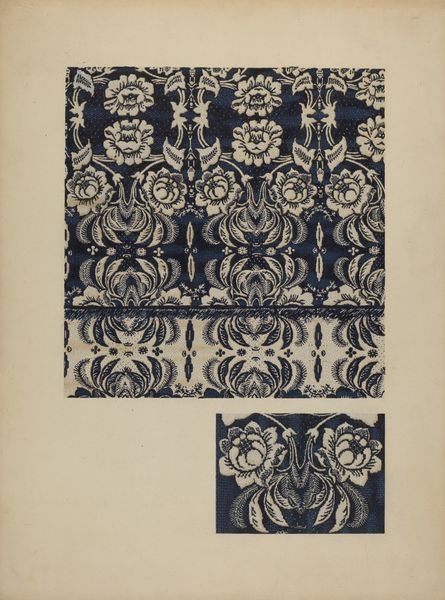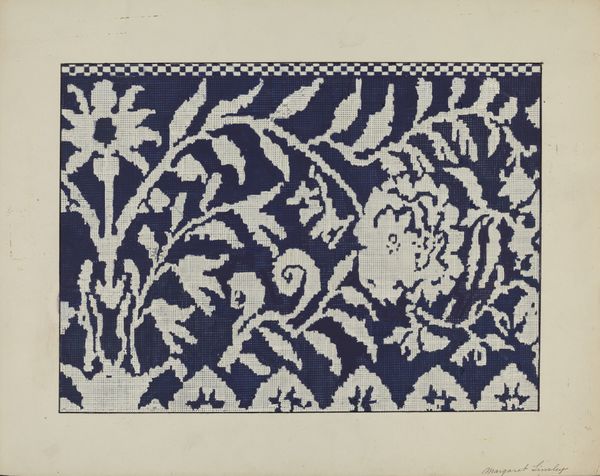
textile
#
art-nouveau
#
textile
#
fabric design
#
decorative-art
Dimensions: height 25 cm, width 35 cm, height 18.8 cm, width 27.8 cm, height 5.7 cm, width 21.0 cm
Copyright: Rijks Museum: Open Domain
Editor: Here we have "Staal met bedrukte zijde, dessin Aussee" from the Wiener Werkstätte, dating from 1911-1914. It's a textile sample, a design on printed silk. What strikes me is the color palette. The muted green and lavender feel unexpectedly modern, almost calming. How do you interpret this work? Curator: It's interesting you mention the calming effect. The Werkstätte, while pursuing aesthetic innovation, tapped into something deeper: the human need for order and beauty in a rapidly industrializing world. The floral motifs, though stylized, connect us to nature and a sense of enduring harmony. Notice how the 'Aussee' design, likely inspired by the Ausseerland region, a popular resort at the time, evokes both leisure and tradition. Do you see how the arrangement of stylized flowerheads and the somewhat regimented symmetry speak to those values? Editor: I do now. It's not just pretty; there’s intention behind it. Were there specific symbolic meanings associated with these particular flowers or motifs? Curator: Potentially, but more generally, the floral motif in textiles often represents themes of growth, prosperity, and even remembrance. But it is worth noting that they didn't adopt these figures with explicit meaning, as something that one might find in, say, 15th century devotional painting. However, the choice of motifs might very well reflect popular aspirations or cultural ideals. The Werkstätte sought to elevate everyday life through design, so in a sense, the symbolic weight rests in their desire to infuse objects with meaning beyond pure function. What would people do with such designs at that time? Editor: It’s amazing how much history can be woven into something seemingly simple, like a textile design. It was obviously made for decoration purposes in clothing and interiors. Curator: Exactly. It shows the fascinating interplay between design, culture, and our human need for meaningful connection to the world around us, in all areas of life. I find that rather moving. Editor: I agree! I will never look at fabric the same way again. Thanks so much.
Comments
No comments
Be the first to comment and join the conversation on the ultimate creative platform.
